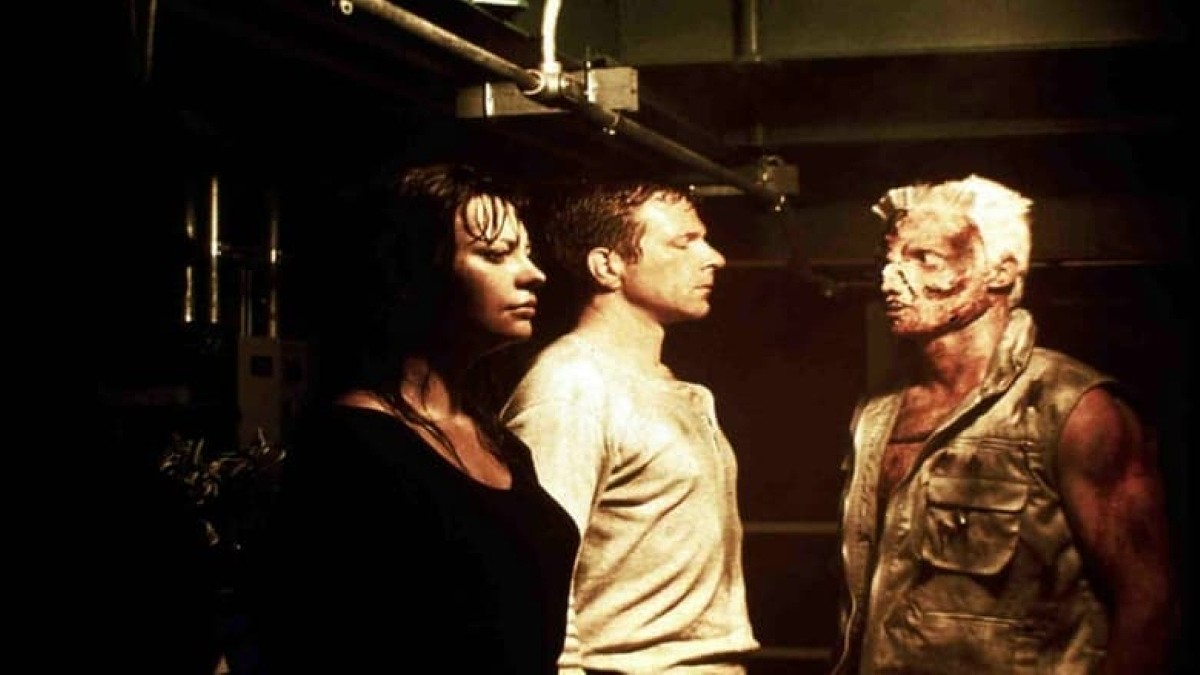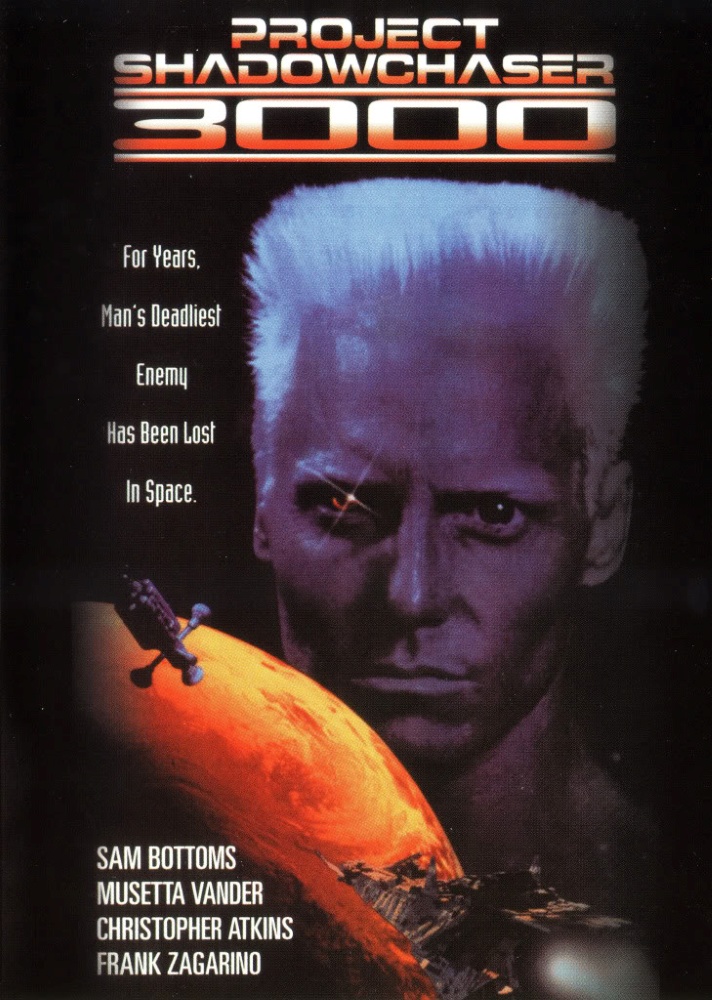aka Beyond the Edge of Darkness
Crew
Director – John Eyres, Screenplay – Nick Davis, Producers – Shari Lane Bowles, John Eyres, Paul Eyres & Gregory Vanger, Photography – Mark Morris, Music – Steve Edwards, Visual Effects – The Magic Camera Company, Additional Visual Effects – Digital Film, Special Effects Supervisor – Larry Fioritto, Makeup Effects – Image Creators Inc, Production Design – Mark Harris. Production Company – Nu Image/EGM Film International.
Cast
Sam Bottoms (Kody), Musetta Vander (Rea Pastov), Christopher Neame (Renko), Christopher Atkins (Snake), Aubrey Morris (Professor), Bill Kirchenbauer (Wheels), Ricco Ross (Lennox), Robina Alston (Dee), Frank Zagarino (The Android), Mark Phelan (Captain Mac Sanders)
Plot
The crew of the Comstat-5 space station in orbit around Mars discover the lost ship Siberia heading towards them on a collision course. The Siberia disappeared 25 years ago after reportedly having found supplies of a new type of ore on Juno 5. The Siberia rams into the station and the two joined ships head on a course for burn-up in Mars’s atmosphere. The crew enter the Siberia looking to shut its engines down. There they encounter one of the ship’s android protection units. It has been infected with a virus that has turned it into a homicidal killer that is able to change its shape and appear as any one of them.
That Project Shadowchaser III bears no relation to any of its predecessors – other than having the title, director John Eyres and the impressively muscular, snow white blonde Frank Zagarino as a rogue android in common – is no particular surprise. The previous sequel Project Shadowchaser II (1994) had no relation to the original Project Shadowchaser (1992) either. Indeed, the direct-to-video franchise market has become so thinly exploitative that both Project Shadowchaser sequels have managed to string a series out of a title that has absolutely nothing to do with them – in the first film, the titular project referred to a covert government operation to create an android.
To say that Project Shadowchaser III is the best of the series is no particular recommendation. The first film was only enjoyable when its absurdities were regarded as a source of amusement; the second didn’t even have that going for it. Project Shadowchaser III was followed by a fourth film Project Shadowchaser 4/Alien Chaser/Orion’s Key (1996) that came without John Eyres directing but featured Frank Zagarino as an alien android awakened from a pyramid and was naturally unrelated to any of the preceding entries.
The best that can be said for Project Shadowchaser III is that it rises to a level of bare competence. It has an adequate cast; there are some okay effects; and there is not too much in the way of glaring improbabilities as there were in the first two films. John Eyres does a reasonable job directing. If nothing else, he keeps the action constantly on the move, which at least distracts one from the fact the film has no plot.

On the other hand, Project Shadowchaser III has a number of glaring problems that you cannot help but notice. One of these is the fundamental confusion between whether the film is trying to be a ripoff of The Terminator (1984) (as the other films in the series were) or a ripoff of Alien (1979) and The Thing (1982). We are never sure if what the crew are facing is meant to be a rogue android or a soul-sucking, shape-changing alien vampire. Sometimes it is both and John Eyres, with his typical penchant for minimalist motivation, never deigns to explain anything about what caused the android to go out of control or how come it suddenly develops shape-changing behaviour and the need to devour human souls.
In the second Project Shadowchaser film, John Eyres let his action director proclivities come to the fore but took them to such a ridiculous extreme that the film collapsed into ridicule. With Project Shadowchaser III, Eyres has his action technique under control and effectively manages to substitute on-screen busyness for excitement. Although there are times when the film still manages to descend into the ridiculous – like one very silly scene with everybody in the engineering section yelling at each other about whether a switch should be flicked upwards or downwards; or the scene where Bill Kirchenbauer’s wheelchair spontaneously goes out of control and spins him into the airlock to be depressurised.
Director John Eyres has made a number of other action/genre hybrids including the UFO/action film Monolith (1994), the executed killer returns from the grave/action film Judge and Jury (1996), Octopus (2000) and Ripper: Letter from Hell (2001) about a series of modern-day Jack the Ripper killings. Eyres also produced Dark Planet (1996), The Apocalypse (1997) and Spoiler (1997).


